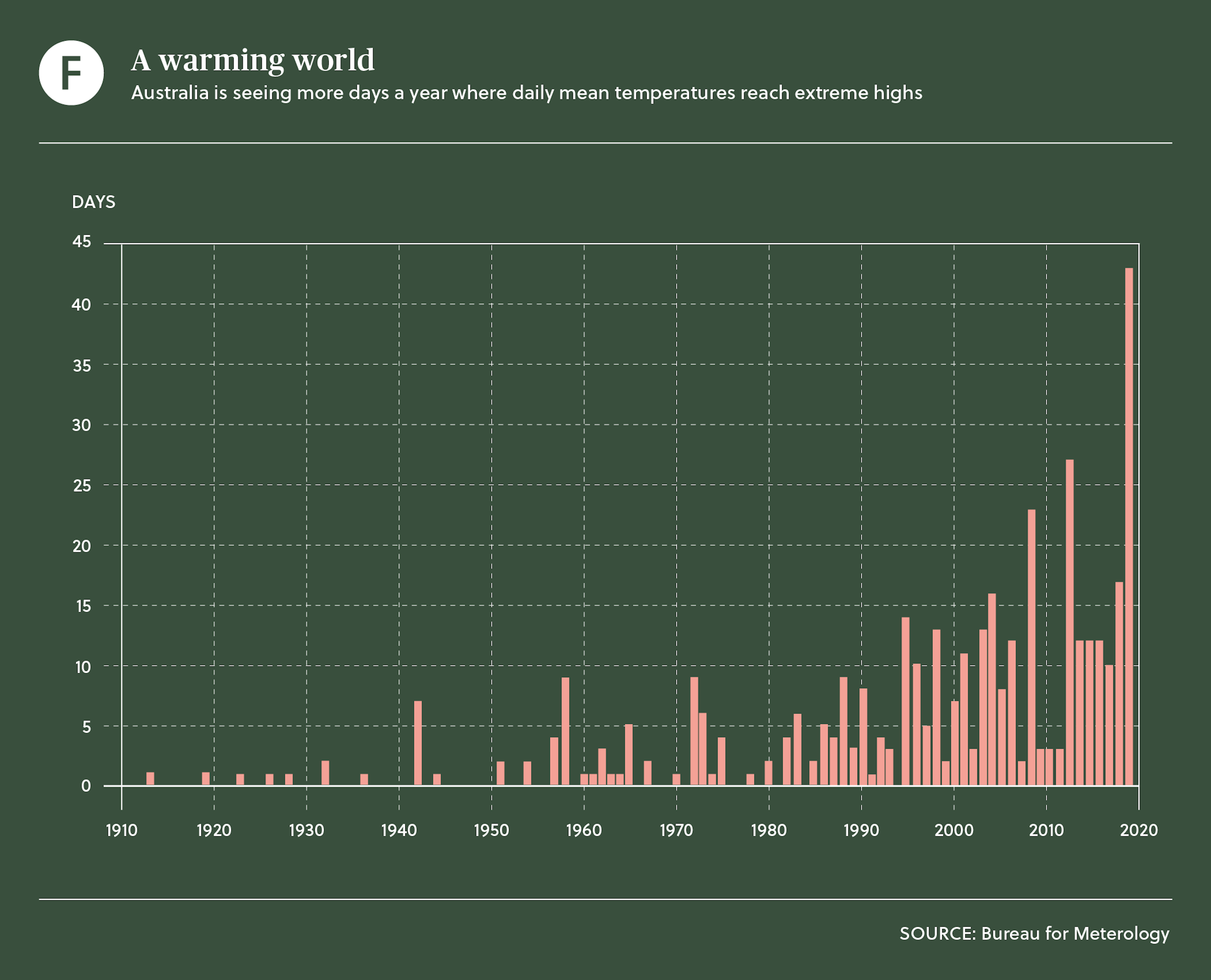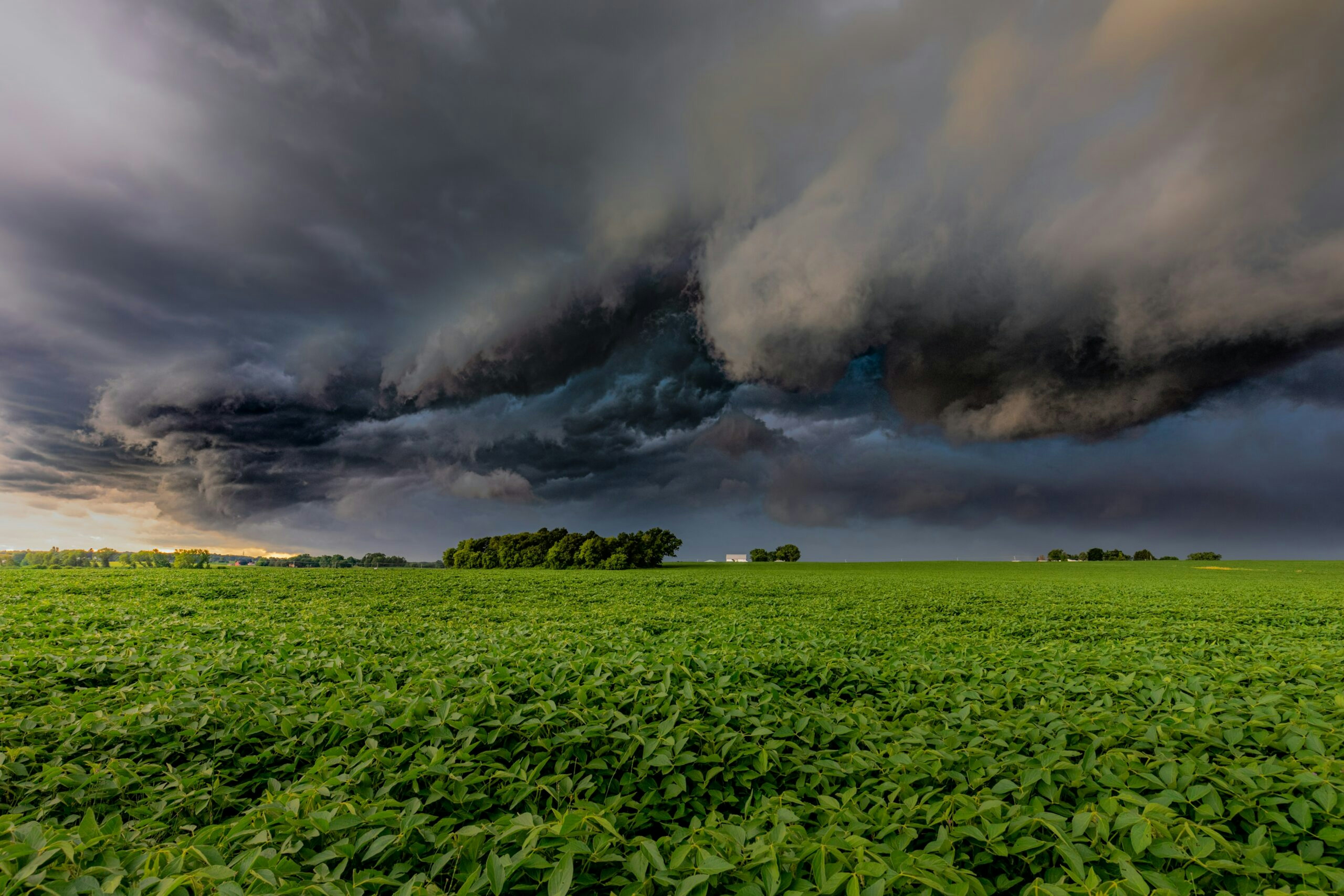Grid operators are waking up to the need for greater infrastructure resilience as climate change increases the severity of weather events
CLIMATE CHALLENGE
Today’s grids were not built for a warming climate where high-intensity weather events are commonplace
RESILIENCE REQUIRED
Grid operators are starting to distinguish between reliability and resilience—and to plan for the latter
KEY QUOTE
The precise implications of future weather patterns have not been fully studied or planned for
As Alan Finkel, Australia’s former chief scientist, writes, the weather changed his life on September 28th, 2016, but the climate has shaped it since. On that day, a series of severe thunderstorms struck South Australia with destructive winds and at least seven tornadoes. Transmission lines were damaged. “[This caused] fault currents to surge through the network and trip the interconnector between South Australia and Victoria. The South Australian network collapsed and the state went into blackout,” Finkel says.
The severity of the event impacted Finkel greatly just a week before he was due to chair a review of Australia’s National Electricity Market. What he could not have predicted was that such apparently exceptional events would become commonplace.

WORSENING WEATHER
In March 2018, tropical cyclone Marcus battered Darwin, in the Northern Territory, with gusts exceeding 130 kilometres per hour. It caused A$5 million ($3.9 million) of grid damage and left almost a third of Darwin’s electricity customers without power. The summer of 2019 saw a bushfire crisis that cut power supplies to 159,000 electricity customers in New South Wales, including 4700 people on life support. The fires cost grid operators around A$102 million ($69 million).
These are extreme versions of visible climate threats, but then January 2022 brought a new kind of weather event to the inhabitants of north and northwest Canberra, Australia’s capital city. Unique conditions led to the appearance of a “supercell” thunderstorm that caused worse grid damage in ten minutes than the Australian Capital Territory had seen in the previous half decade. The storm severed supply to 21,672 customers. There is little doubt over the cause of these devastating weather impacts.
The Australian Government Bureau of Meteorology confirms Australia’s sea and air temperatures have risen significantly since national records began in 1910. So has the frequency of extreme heat events.
GLOBAL PROBLEM
Weather-related disasters have more than doubled in Australia since the 1970s, topping A$35 billion ($24 billion at 2022 rates) in damages in the decade up to 2019, according to the Climate Council, an Australian non-profit organisation. It might be tempting to assume Australia is particularly exposed to extreme climate events. This is only partly true: Australians are five times more likely to be displaced by a climate-fuelled disaster than someone living in Europe, the Climate Council says.
In other Pacific countries, though, the risk is 100 times higher. The wildfires that devastated Australia in 2019 and 2020 were mirrored by “megafires” in Brazil, Siberia and the west coast of the United States. In 2022, drought-fuelled wildfires raged across Europe from Albania to the UK. Extreme weather events are hazardous for grids because traditional electricity networks rely on highly-exposed infrastructure—typically, overhead lines strung between pylons—to deliver power to consumers.
These assets are greatly at risk from the effects of climate change. Stronger winds increase the likelihood of trees or branches falling on power lines. Droughts and heatwaves boost the chance of wildfires that destroy poles and cables.

NETWORK DAMAGE
Lightning strikes and floods can also damage other critical assets such as transformers and substations. Just as importantly, floods and wildfires can make it hard to access affected areas, increasing the time it takes to restore service. While extreme weather events are the main climate change-related threat to electricity networks, a warming climate can also affect grids by reducing the efficiency and capacity of the distribution network.
“That’s less talked about, but in the long run may be a bigger issue because it’s not punctual, but consistent over time,” says Sabine Erlinghagen of Siemens Smart Infrastructure, the digital grid arm of the German conglomerate. Further aggravating the picture is the fact that climate change is putting stress on the grid at the same time as the electricity network is being forced to work harder to deal with warmer global temperatures.
This is most obvious in heatwaves when the grid’s ability to transport power is affected by soaring temperatures yet demand is often highest because of the widespread need for air conditioning.
INCREASING THREAT
Over the long term, this situation is likely to get worse as the climate continues to change and grids become more essential to global energy consumption. “The decarbonisation of the economy and the energy transition process will put the electrical system and the improvements that will be implemented to the test,” says Oriol Saltó i Bauzà, of AleaSoft Energy Forecasting, an energy market analyst.
“Decarbonisation implies that all or a large part of the energy consumed will have to come from renewable energy sources, mainly wind and solar. This means that the demand and production of electricity will multiply several times,” Bauzà says.
This additional power will require grids—transmission and distribution—to be secure and resilient. Preparing grids to transport such large volumes of electricity in a way that is resistant to the worsening effects of climate change needs to happen at least a decade in advance, Bauzà adds.
UNCERTAIN OUTLOOK
How much the changing climate can affect the energy system in the future remains uncertain. “The precise implications of future weather patterns have not been fully studied or planned for,” says Elise Caplan, of US non-profit the American Council on Renewable Energy (ACORE).
In the US, Caplan says, the Federal Energy Regulatory Commission (FERC) has admitted it does not know whether and to what extent transmission providers are conducting, or planning to conduct, extreme weather vulnerability assessments. Nor is FERC aware of the methods used to conduct those assessments and what might be done with the information from them.

ASSET RISKS
Weather events do not only affect the grid but the entire energy system. “The efficiency of power plant operations can be reduced by extreme hot and cold for all resource types,” says Caplan. “The performance of resources that rely on water for once-through cooling can be reduced if the water temperature is too cold or hot, or if there is drought-induced reduced water availability,” Caplan adds.
Similarly, hydropower and concentrated solar power generators could be hit by reduced water availability, while air-cooled condensers and cooling towers can have lower efficiencies in high temperatures and wind speeds. “The increased frequency and intensity of hurricanes, paired with greater rainfall, rising sea levels and larger storm surges, may increase the risk of coastal flooding which can disrupt power plants along the coasts,” Caplan says.
CREATING RESILIENCE
The key to safeguarding these assets and the wider grid is to make them more resilient. A 2022 Australian paper on network resilience defines this as improving the network’s ability to resist, absorb, accommodate, adapt to, transform and recover from the effects of a climate-related hazard.
“To mitigate the highly likely continuation or increase in extreme weather events, an expansion of the transmission system, especially large interregional lines, and improved transmission planning, are essential,” says Barbara Tyran at ACORE.
LESSONS FROM TEXAS
The extent to which transmission system buildouts can help create resilience is clear from an ACORE study into the electric grid in Texas, which is largely isolated from others in the US and has suffered severe outages owing to extreme weather patterns in recent years.
Most notably, in February 2021 Texas suffered the worst energy infrastructure failure in its history, when hundreds of people died and 4.5 million homes and businesses were left without power for days in the wake of a series of winter storms. ACORE’s analysis suggests each additional gigawatt of transmission capacity connecting the Texas power grid with neighbouring states could have saved nearly $1 billion and kept the heat on for approximately 200,000 Texas homes.
“This is one of several findings demonstrating that additional interregional transmission capacity can not only enhance grid resilience but also significantly reduce the consumer cost impact of extreme weather events,” says Tyran. “A key benefit of transmission is to enable greater resource diversity, which improves reliability during extreme weather,” she adds.
Expanding transmission systems would also help accommodate the greater use of network capacity and renewable energy that will be needed to keep global temperatures below 1.5C of warming compared to 1990 levels. The same argument goes for the infrastructure owned and managed by distribution system operators (DSOs).

HIGH PRIORITY
The problem, according to experts, is that neither distribution nor transmission networks are getting enough investment at present. “In the case of the US, transmission policy is a top priority for the Federal Energy Regulatory Commission—but transmission development has been a major challenge for the industry,” says John Markwell of Exus Management Partners, an investment and asset management firm.
Transmission issues did not even make it into the US’s 2022 Inflation Reduction Act, the biggest infrastructure support package in the history of the country. “It is expected to be addressed with new policies,” Markwell adds.
In Europe, meanwhile, “We need to invest much more in the distribution grid,” says Louise Rullaud of Eurelectric, a body representing European DSOs. “This applies to transmission as well,” she adds.
SIGNIFICANT INVESTMENT
Eurelectric estimates distribution grids in Europe and the UK will need to invest €33 billion to improve grid resilience between 2020 and 2030, as part of an overall spend of €400 billion to support the energy transition. While that sounds like a lot, if rate-based across all European electricity users it would only lead to an average 1.5% increase in energy bills, Rullaud says.
“This increase will be temporary because we will integrate much more renewables and this will result in between 50% and 65% lower costs compared to fossil fuels,” Rullaud adds. Such a deal might have seemed acceptable a year or two ago, but with the conflict in Ukraine pushing European energy bills into uncharted territory, it could be hard to convince billpayers of the need for even a slight additional increase in costs, making network upgrades difficult to tolerate.
NEW TECHNOLOGY
In Australia, a growing number of electricity customers have grid connections plus solar and storage microgrid systems. “Network [operators] are thinking about what’s island-able,” says Jill Cainey of Erne Energy, a consultancy.
“Most of the time you are connected [to the central network], but ahead of a bad forecast you charge up your network battery and ready your community to go islanded on the microgrid, to protect them from whatever’s going to happen to the feeder,” Cainey adds.
Another option for operators is to get smarter about managing existing network assets, particularly using artificial intelligence (AI). The technology can be used for spotting trends that would be harder for human analysts to see. “One of the areas where AI has been applied is to understand the load requirements on the grid, to prioritise the urgency of upgrading or replacing physical assets,” says Steve Kwan of artificial intelligence vendor Beyond Limits. Similarly, artificial intelligence is helping sift through drone footage of overhead lines, looking for signs of weakness that could lead to a failure during an extreme weather event.
Furthermore, if a fault does occur then smart algorithms could work out how best to re-route power without stressing other parts of the grid. “This is a modelling and simulation exercise. These types of simulations, in years past, have been 100% based on physical models. More and more, they are being enhanced by AI,” says Kwan. The ability to re-route electricity in the event of a fault can also be helped by dynamic line rating, which aims to maximise the carrying capacity of a given line depending on environmental conditions.
Using AI for dynamic line rating calculations can allow power cables to carry up to 30% more electricity, Erlinghagen of Siemens says.
SHORT-TERM SOLUTIONS
Some experts believe artificial intelligence could also go a long way towards improving the resilience of grids in the short term. AI can already carry out complex analyses based on data from devices such as smart meters, allowing grids to operate flexibly without the need for major sensor rollouts.
Given that electricity grids need to be strengthened anyway to cope with the energy transition, you cannot do without infrastructure investment, Erlinghagen says. “But you can waste a lot of money if you don’t do it in a smart way. There’s a risk of electricity grids becoming the bottleneck of the energy transition. The faster you apply smart ways of working, the less the risk of the grid becoming the bottleneck,” Erlinghagen adds.
PROMOTE RESILIENCE
With extreme weather patterns worsening all the time, the promise of AI is that it could at least tide grids over until wider infrastructure upgrades are possible. Regulators will need to move fast, however, because the current rules for most grid operators are not conducive to improving resilience. In most parts of the world, says Erlinghagen, grid operators can rate-base hardware investments but not software ones.
This could delay the deployment of smart systems that would deliver immediate benefits. In Australia, meanwhile, major climate impacts are not included in network operators’ reliability calculations, so a DSO could boast a 100% uptime record despite suffering blackouts from extreme weather. None of these challenges are impossible to overcome, but time is of the essence.
There is no telling when the next severe meteorological event will devastate a grid near you. •